Federal budget 2022 Gold Coast: Everything you need to know
The federal budget has been declared a “mixed bag” for the Gold Coast, with civic and political leaders weighing up its impact on the city’s economy. One described it as “almost embarrassing”.
Business
Don't miss out on the headlines from Business. Followed categories will be added to My News.
THE federal budget has been declared a “mixed bag” for the Gold Coast, with civic and political leaders weighing up its impact on the city’s economy.
The budget, brought down on Tuesday, contained only a handful of commitments for community projects and already announced projects including the light rail extension to Burleigh and Coomera Connector.
The Albanese Government also announced a $10bn housing future fund and plans to build more than 1 million new homes.

Gold Coast Mayor Tom Tate said he was disappointed the Coast never “got a mention” during Treasurer Jim Chalmers’s budget delivery. Mayor Tate acknowledged that the federal budget papers listed the Coomera Connector and Stage 3 light rail as previously funded projects.
He said the Federal $10bn Housing Plan was commendable but he questioned its target of one million homes Australia wide in five years.
“It’s never smart to over-promise and under-deliver and I fear this is what will happen here,” he said.
“Right now, our city needs 6000 new dwellings. Deliver those inside the next year and I’ll give the budget an A+ but the proof will be in the delivery.”
This policy was welcomed by Q Shelter executive director Fiona Caniglia.

“‘We hope this opportunity is used to restructure the rental market to offer more people security of tenure through build-to-rent models which include rental subsides that support more mixed developments coming on line, at scale,” she said.
“Our current housing system is fragile because we rely too much on individual investors who may choose to remove homes from the rental market at any time.”
Gold Coast-based Opposition frontbencher Stuart Robert declared the budget was “almost embarrassing”.
“Where are these houses coming from? Where is the land coming and the tradies?” he said.
“It’s just nonsense and a smoke and mirrors budget.”
Business leaders are also disappointed the instant asset write-off program introduced in 2019 by the former government with an end-day of June 2023 will not been renewed.
‘Responsible’: What budget means for light rail extension
THE Gold Coast has failed to rate a direct mention in the Albanese Government’s inaugural budget, as Labor moves to release pressure on the housing crisis
Treasurer Jim Chalmers brought down his first budget on Tuesday night, with tens of billions of dollars in cost of living relief and unlocking new housing, but little in the way of new infrastructure.
Instead, a central plank of Labor’s plans is an extraordinary intervention into the housing sector.
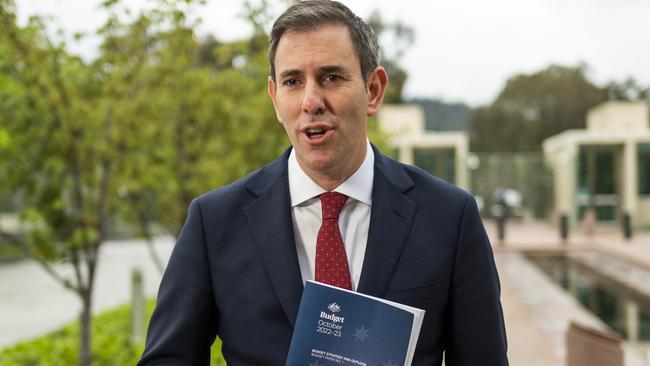
This includes a $10bn Housing Australia Future Fund to build 30,000 new social and affording homes and an “accord” struck between the federal and state governments, investors and industry.
This accord, Dr Chalmers said, would see more than 1 million new dwellings built across Australia in the five years between 2024-29.
“Most of this supply needs to come from the market, not the government but there’s a role for government, and we intend to play a leading role – by co-ordinating and kickstarting the investment we know needs to happen,” he said.
“To get the accord started, this budget commits an initial $350m in additional funding for another 10,000 new affordable homes, on top of our existing commitments.
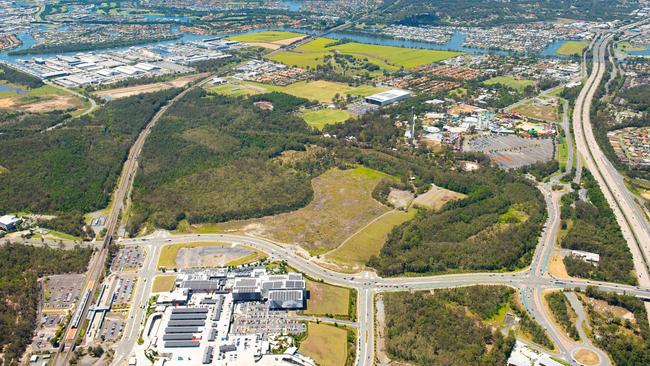
“This will be delivered through an ongoing funding stream to help cover the gap between market rents and subsidised rents – making more projects commercially viable.”
Dr Chalmers said there would be a role for local governments to play in changing zoning and releasing land for development.,
It comes just a week after Deputy Premier and state Planning Minister Steven Miles ticked off on a swathe of updates to the Gold Coast City Plan, including the Upper Coomera investigation area, which will result in more than 700 additional dwellings.
Peak development bodies have warned the amount of housing for the increasing population – set to hit 1 million people by 2041 – will only get more scarce and come at higher prices.
The Gold Coast City Council is also currently investigating opening up new housing sites in Gaven North and Highland Park.
But there was little else in funding for the Gold Coast, with neither the city, nor any of its key infrastructure projects mentioned during Dr Chalmers’ speech.

The budget contains already committed funds, including the Commonwealth’s $1bn cut of the Coomera Connector’s first stage, with the new road project running from Nerang to Coomera, and $395.6m for Stage 3 of light rail between Broadbeach and Burleigh Heads.
The tram extension broke ground last week.
However, there was no funding for critical 2032 Olympic Games transport projects including Stage 4 of the light rail between Burleigh Heads and the border, or the heavy rail extension from Varsity Lakes to Gold Coast Airport.
The budget deficit is $36.9bn in 2022-23, down $41.1bn from the $78bn forecast by then-Treasurer Josh Frydenberg at the March 29 pre-election budget.
However, the budget documents reveal the nation will not return to surplus until the 2030s, decades after the last surplus was announced by then-treasurer Wayne Swan in 2008.

Net debt, which grew dramatically during the Coalition’s nine years in power, is tipped to continue climbing and peaking at $864.7bn in 2026-27.
Gross debt is $927bn and is expected to top $1.15 trillion – or 43.1 per cent of GDP – by 2025-26.
Inflation is expected to peak this year at 6.1 per cent before declining to 5.75 per cent in 2023-24.
Unemployment is expected to increase from record lows to peak at 4.5 per cent and in 2023-23, with GDP growth is predicted to bottom out at 1.5 per cent.
In bad news for small business operators, the instant asset write-off program introduced in 2019 by the former government with an end-day of June 2023 will not been renewed.
It was ramped up further in 2020 as a measure of providing relief to business operators at the height of the pandemic.
The budget papers note: “tax return data from 2020–21, the first full financial year after the measures were introduced, suggests that the use of these measures is significantly lower than originally predicted, particularly by large businesses.
“This has contributed to the temporary increase in company tax receipts,” the budget papers read.
Dr Chalmers used his budget speech to frame the budget as a document born from “hard decisions for hard times” which provided a blueprint to “keep spending under control”, creating a better buffer for future financial downturns and keeping a lid on inflation.
The Treasurer said new policies had been “largely offset across this year and next to avoid adding to inflation when price pressures are most acute”.

“This is a responsible budget that is right for the times and readies us for the future,” he said.
“It delivers on the priorities of the Australian people, and it repays their faith in a new government.
“It recognises that our best defence against uncertainty around the world is responsible economic management here at home.”
Other key points of the budget include:
* An extra $100m for the Australian Federal Police to target bikie gangs, the mafia and cyber crime.
* More than $22bn in savings found in the budget, cutting projects and a series of grant programs.
* The budget for Tourism Australia will be slashed by 25 per cent in the coming financial year, going from $214m to 178m and falling to $176m in 2025.
* The age at which people can drop a lump sum into their superannuation from a house sale will be dropped from 60 to 55. This is a significant move for the Gold Coast property market, of which downsizers make up a large number of buyers.
* Facebook and Google will be forced to pay their “fair share of tax” with a tightening of rules that will boost federal government coffers by almost $1 billion. Sneaky loopholes that saved multinational companies millions, including moving money to sister companies offshore in tax-havens like the Bahamas and adding dodgy debts to their accounts, will be closed.
* The government will provide $24.7m over 12 years from 2022–23 to support the preparation and conduct of the Gold Coast co-hosted 2032 Olympic and Paralympic Games, including the oversight of infrastructure investment to support the delivery of the Olympics and the co-ordination of Australian Government operational guarantees.
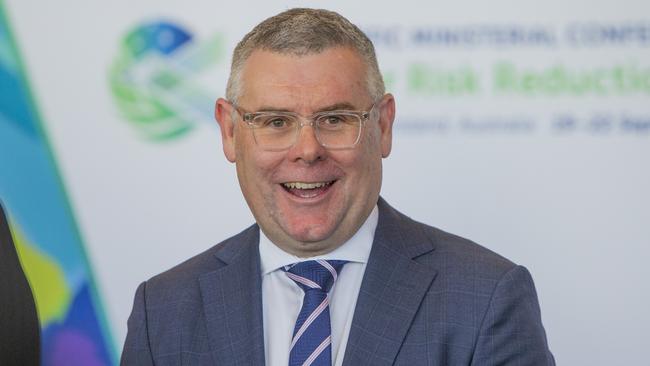
The budget also contained a range of funding commitments for Gold Coast community infrastructure.
They include:
* $900,000 for upgrades to Labrador Tigers AFL Club.
* Unspecified funding for the Pimpama Community Battery and Gold Coast University Hospital - Urgent Care Clinic
* $548,400 for the Saltwater Creek Gold Coast Urban Rivers program.
* 932 additional places at Southern Cross University, valued at $26m.
Gold Coast-based Labor Senator and Albanese Government frontbencher Murray Watt said the budget would “make a difference to the day-to-day lives of Gold Coasters, through better roads, cheaper medicines and cheaper childcare”.
“This budget will also deliver more social and affordable housing, more paid parental leave, more opportunities to see a doctor and get training for a better job,” he said.
“The Albanese Government is delivering on our commitments, and will start to repair a decade’s worth of waste and rorts under the former government.
“On top of existing Budget commitments for roads projects and stage 3 of the light rail, the new projects the Albanese Government has funded through the October Budget - like an urgent care health clinic, footy club upgrades and more uni places - will benefit Gold Coast families.”
ANALYSIS: WHAT BUDGET MEANS FOR GOLD COAST

THE party’s over and the harsh light of morning is washing over weary and sore-headed Australians coming to grips with the new day.
The Albanese Government’s inaugural budget plays as a sober wake-up call to the new reality of soaring inflation and the cost of living crisis which has characterised the Covid era.
Gone is the former Coalition Government – whose nine-year rule was terminated by voters in May – and its penchant for tax cuts and electoral pork barrelling.
In its place stands Labor and rookie Treasurer Jim Chalmers, who has one eye squarely on trying to deal with the laundry list of challenges facing Australia, and the other eye on protecting Labor’s flank from its own reputation, earned or otherwise.
The repeated emphasis on election promises and “restrained spending” littered through Dr Chalmers’ suggests the Treasurer is trying play ghostbuster and vanquish two spectres which have haunted the party for decades.
The first is the vision of Labor painted by every Liberal Party leader since John Howard took on Paul Keating – that it is fiscally profligate and plunges Australia into deep deficits while the Coalition is the financially responsible adult in the room.


The second is Julia Gillard’s infamous 2010 broken election promise not to introduce a carbon tax.
Dr Chalmers’ careful budget is a significant first step towards putting these ghosts to bed and changing the narrative around Labor in the long run.
It’s the latest step in the strategy he and Prime Minister Anthony Albanese have been laying the groundwork to ensure their government is a long-term affair.
Depriving the Coalition, watching the budget brought down from the Opposition benches for the first time in nearly a decade, two of their key lines of attack while emphasising the high-spending habits of the previous government is a key step.
The difference between the March budget and this week’s effort could not be any starker.
The March document was an “everyone’s a winner” budget designed to gain voters ahead of an election.
Short-term sweeteners abounded.
October’s budget is a table-setter. Less sweet and plenty of savory. Eat your vegetables now with the promise of a sweet treat down the line.
So what does this budget mean for the Gold Coast?
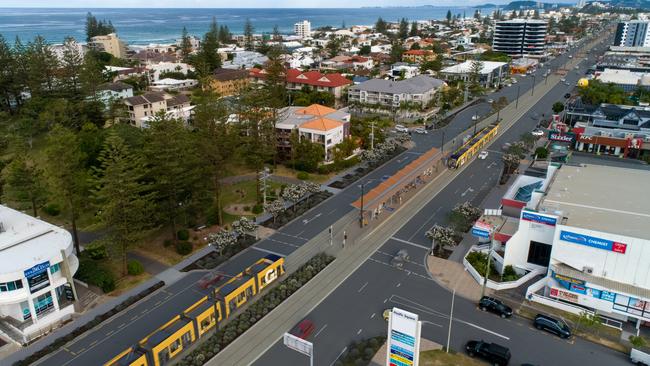
Very little directly, with no new spending on key infrastructure projects or significant relief for small business operators, something which will disappoint many.
No extra funding for the tourism sector is also disappointing given the damage the city’s biggest industry took during the two years of Covid lockdowns.
However, the intervention into the housing sector in a bid to take pressure of the low supply will be welcome by many Gold Coasters.
The city is currently trapped in a vice – between a surging population with more than 15,000 people annually moving to the gold Coast – and a development sector which is not building houses at a fast enough rate to cope.
Coming just a week after updates to the City Plan were ticked off, the Gold Coast is in line to get at least 700 more houses built.
It’s nowhere near enough but it’s a start.
Fiscal responsibility is important and a key step towards reining in inflation but with the clock ticking on the 2032 Olympic Games, the federal government won’t be able to put off spending on critical rail infrastructure forever.
MIGRATION BOOST
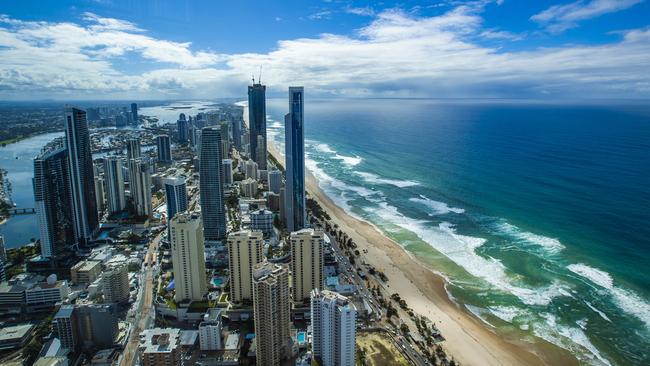
The Gold Coast is set to receive a boost of permanent skilled migrants to ease the ongoing worker shortage that is crippling Gold Coast businesses.
Labor’s first Budget in government commits to expanding the permanent Migration Program from 160,000 to 195,000 over the next year, with 90 per cent of new places specifically for skilled migrants.
A quarter of those migrants will be target to regional areas.
The federal government has also committed $42.2 million more to accelerate visa processing, reduce the backlog, and raise awareness of work opportunities for high-skilled migrants in the permanent Program.
A further 3000 permanent visas will be allocated annually to nationals of Pacific island countries and Timor-Leste, through a new Pacific Engagement Visa announced in the Budget.
Pacifika workers will be offered greater training opportunities within the aged care sector, especially, with 500 more places opened in the aged-care training pathway for the Pacific Australia Labor Mobility scheme through to 2023.
The expansion hopes to “ease skill shortages” in the care sector and build “stronger economic relationships with our Pacific neighbours”.
Student and secondary training visa holders will have their work restrictions relaxed until June 30, 2023, allowing them to work additional hours in any sector – a welcome relief for local businesses crying out for workers post-Covid.
WHITE SPOT LEGAL BATTLE

GOLD Coast aquaculture companies have taken the federal government to court, claiming damages related to the 2016 outbreak of white spot syndrome in the Logan River.
The 2022 Budget mentions two claims related to the outbreak of white spot syndrome that infected seven prawn farms on the Logan River from late-2016 to early-2017.
Prawns from the infected farms were destroyed to eradicate the disease in a joint response by “industry, Commonwealth and state” parties.
Gold Coast Marine Aquaculture has filed a claim in the Federal Court against three seafood importing companies and the federal government.
It claims the government breached “a duty to warn” based on “obligations to the Queensland Biosecurity Act 2014”, among other things.
The company alleges the breach caused or contributed to the outbreak and the resulting damage, estimating it lost at least $41.4 million.
Meanwhile, a class action has also been filed in the Queensland Supreme Court on behalf of commercial fishers, handlers and wholesalers.
The case, led by Tweed Bait, seeks compensation for “loss and damage suffered” as a result of the outbreak, and the Commonwealth’s response to it.
The 2016 outbreak is estimated to have cost farmers and associated industries almost $400 million, including stalled production and the killing of $25 million of high-quality prawns.
White spot syndrome emerged in Asia in the 1990s and though lethal to prawns and crabs it is not harmful to humans.
It is believed to have been introduced to local rivers by fishers using imported, infected prawns as bait.
Legal costs relating to the 2016 white spot syndrome outbreak are not quantifiable until the matter is determined or resolved by the Courts.
Gold Coast ‘needs 6000 more homes’ immediately
GOLD Coast civic leaders say Tuesday’s federal budget must unlock up to 6000 new houses for the city while taking pressure off struggling small business operators.
Treasurer Jim Chalmers will bring down his first budget, which is expected to be light on sweeteners amid global economic uncertainty, a cost-of-living crisis and expectations power prices will jump 30-40 per cent in the coming year.
While few are expecting major infrastructure spending on key projects such as light and heavy rail, Gold Coast city leaders say the federal budget needs to be used to take pressure off the city’s rapidly shrinking housing stock.
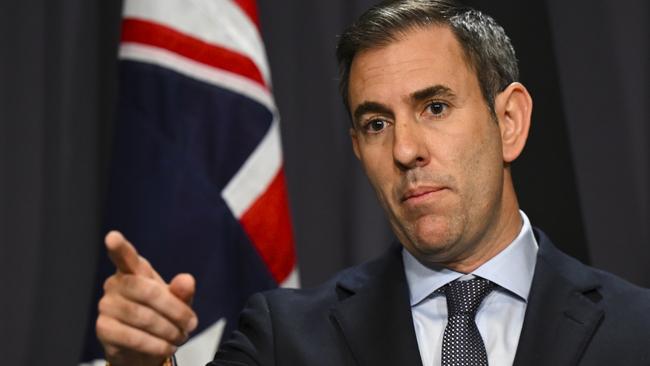
Mayor Tom Tate said the need for Labor to address the housing stock crisis was “paramount”.
“I strongly urge the Federal Treasurer to unlock whatever funding possible to get more stock built and to assist those people who appear to have fallen through the cracks,” he said.
“Our city needs around 6000 additional dwellings now and that is just one example.
“At the same time, the federal government must ensure investors are not scared off from the market as investors buy properties and lease them out to families, singles and couples so they play a critical role in ensuring developers want to build, and release, new products.”
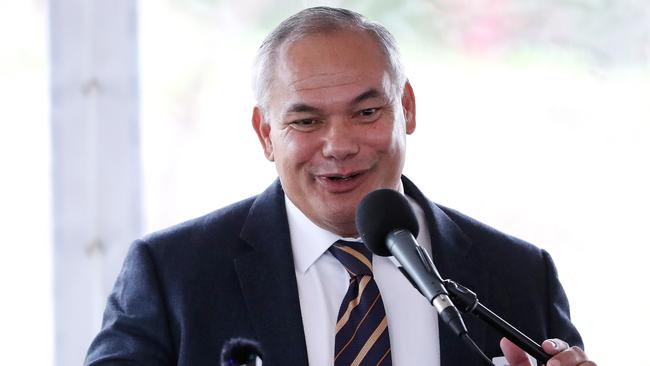
The Mayor urged Mr Chalmers to take a “multi-pronged approach” to tackling inflation and called on the government to ensure Stage 4 of light rail remains on the Federal Infrastructure Priority List.
The $2.7bn project, which will run from Burleigh Heads to the border via Gold Coast Airport was added to the list by Labor following the election.
While it is yet to be funded by either the state or federal governments, the Mayor hopes to securing the money to begin construction in 2025 or 2026 once the Stage 3 extension to Burleigh Heads is completed.

He also called for tax incentives and cost relief from the rapidly increasingly power prices.
The budget will be Labor’s first since returning to power at the May 21 federal election after nine years of Coalition rule.
Among the few details announced prior to the budget’s deliver are
* The creation of a $1bn education investment which would create an extra 20,000 university places for teachers, nurses and engineers, 180,000 free TAFE positions.
* An extra $36.1m to expand the Home Affairs Department staff to get through backlog of stalled visas
* $9.6bn in road and rail projects across the country.
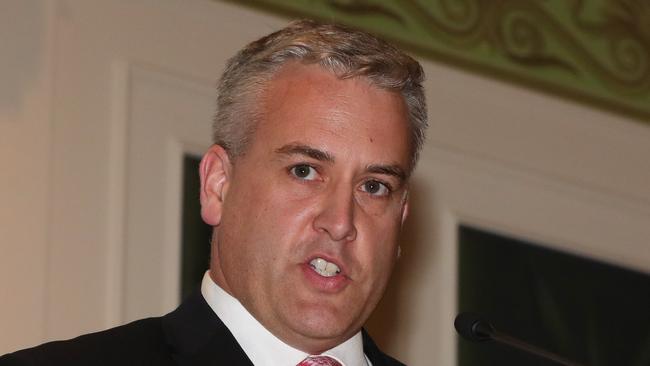
Gold Coast Central Chamber of Commerce president Martin Hall said housing and small business relief were critical to keeping the city’s economy afloat.
“Something which is compounding week-on-week is housing and it’s hitting everyone, so if people cannot afford to live, they cannot afford to work or pay taxes,” he said.
“We absolutely need to see incentives for small business rather than handouts because it is about keeping the doors open, reducing overheads and keeping cash in the businesses.
“Having extended paid parent leave is great but there also needs to be complimentary and tangible support for small businesses.”
LNP Fadden MP Stuart Robert did not respond to the Bulletin’s calls on Monday.




